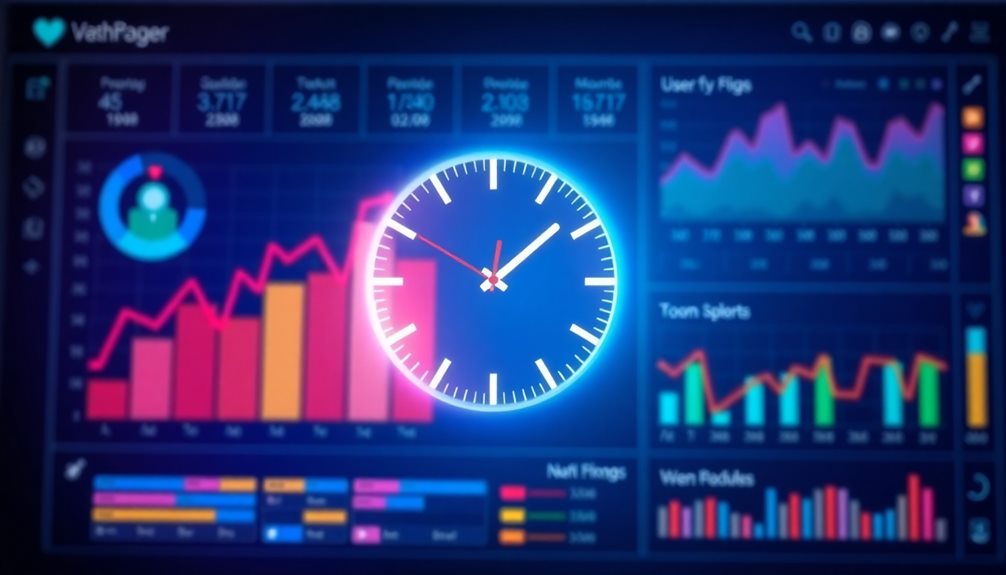When psychology meets data, you open new ways to influence others more effectively. By analyzing linguistic features, psychological profiles, and audience preferences, you can craft personalized messages that boost persuasion. Techniques like logical reasoning and tone adjustments increase trust and engagement. Leveraging tools like chatbots and AI models makes it easier to customize influence strategies at scale. Keep exploring how these insights can help you master the art of persuasion more profoundly.
Key Takeaways
- Integrating psychological insights with data-driven models enhances personalized persuasion strategies.
- Natural language processing tools like ChatGPT tailor messages based on audience psychological profiles.
- Analyzing linguistic features and cognitive cues improves the effectiveness of persuasive communication.
- Credibility and trustworthiness, supported by data, significantly increase message acceptance.
- Combining science and technology enables the artful crafting of influential messages for diverse audiences.

Persuasion is both an art and a science, rooted in understanding how psychological factors and linguistic features influence people’s decisions. When you craft a message, every word, sentence structure, and psychological cue can profoundly impact its effectiveness. For instance, increasing the word count in your message boosts persuasion odds by about 23% per additional word. Longer texts tend to be more convincing because they offer more detail and build a stronger argument. Similarly, making your text slightly more complex or reading difficult can enhance persuasion by roughly 10%. This suggests that engaging your audience with richer, more sophisticated language can work in your favor.
Expressing analytical thinking through language also raises persuasion odds by about 10%. When your message demonstrates logical reasoning and critical insights, it signals competence, making your audience more receptive. However, you should be cautious with self-references. Using personal pronouns like “I” or “we” can actually decrease persuasion effectiveness by around 8%. Instead, focusing on the audience’s needs rather than yourself tends to be more influential. Additionally, high lexical diversity—using a wide variety of words—can decrease persuasion chances by nearly 46%. While variety is generally good, overly diverse vocabulary might distract or confuse your audience, reducing clarity and impact.
Demonstrating logical reasoning boosts persuasion by 10%, but excessive vocabulary diversity can reduce impact by 46%.
Personalized persuasion takes this a step further. When you tailor your messages to psychological profiles—such as personality traits, regulatory focus, or moral foundations—you increase your chances of success. AI tools like ChatGPT 3.5 Turbo enable you to generate content that aligns with recipients’ preferences, making your approach more engaging. Different traits, like prevention focus or emphasis on fairness, influence how you should frame your message to maximize impact. When you understand your audience’s psychological makeup, your messages become more compelling and relevant.
Furthermore, understanding principles from Ethical Hacking can inspire approaches to information security that emphasize trust and credibility, which are crucial for persuasive communication. Finally, leveraging expertise boosts your persuasive power by about 12%. When your source is perceived as credible, people are more likely to trust and accept your message. Credibility acts as a shortcut—people tend to believe experts because “experts are usually correct.” Recent research shows that the rapid development of large language models like ChatGPT has significantly advanced the ability to generate personalized persuasive content at scale, further enhancing the art of influence. Overall, combining psychological insight with linguistic precision, backed by data-driven models, allows you to craft messages that resonate deeply, making persuasion an elegant blend of science and art.
Frequently Asked Questions
How Do Algorithms Adapt to Individual Psychological Differences?
Algorithms adapt to your psychological differences by analyzing your digital footprints, like social media activity and browsing habits. They use machine learning models to predict your personality traits and preferences in real-time. Based on these insights, they tailor content and persuasive messages specifically for you, aiming to increase engagement. This dynamic adaptation makes the experience more relevant and effective, although it also raises ethical considerations about privacy and manipulation.
Can Persuasive Algorithms Manipulate Vulnerable Populations Ethically?
You can’t manipulate vulnerable populations ethically if you ignore their specific needs and vulnerabilities. To do so responsibly, you must prioritize transparency, obtain clear informed consent, and avoid exploiting psychological weaknesses. Respect their autonomy, tailor interventions to protect their well-being, and be cautious about the potential harm. Ethical persuasion balances influence with safeguarding dignity and rights, ensuring you don’t take advantage of those most at risk.
How Transparent Are the Data-Driven Persuasion Techniques Used?
You might think data-driven persuasion techniques are fully transparent, but that’s not always the case. While organizations often claim transparency, some details about data collection, inference methods, and sharing practices remain unclear. You should question how openly they communicate their methods and intentions, especially regarding consent and data security. Trust builds when organizations genuinely explain how they use data, making transparency a crucial part of ethical persuasion.
What Safeguards Exist Against Misuse of Psychological Data?
You’re protected by a mix of ethical standards, legal laws, and technological safeguards. The APA emphasizes privacy, requiring secure data collection and storage. Laws like the MIND Act and state regulations set strict rules on neural data use. Data management policies and oversight bodies enforce compliance, while technological measures like encryption prevent breaches. Together, these safeguards aim to prevent misuse and ensure your psychological data remains confidential and protected.
How Do Cultural Factors Influence Algorithmic Persuasion Strategies?
Imagine maneuvering a maze where cultural signs act as your guide. Cultural factors shape algorithmic persuasion strategies by tailoring messages to fit local norms, language, and symbols. For example, in collectivist societies, algorithms emphasize community benefits, while in individualist cultures, they highlight personal gains. These adaptations ensure your messages resonate deeply, influencing your decisions effectively based on shared beliefs, values, and social cues.
Conclusion
As you navigate the digital world, remember that psychology and data are like two sides of the same coin—one shaping your mind, the other shaping your choices. Together, they form a powerful dance, weaving influence through subtle cues and patterns. It’s like watching a painter and a scientist collaborate on a canvas—each stroke deliberate, each insight precise. Stay aware, and you’ll see the artistry behind every click, every decision, every moment of persuasion.










